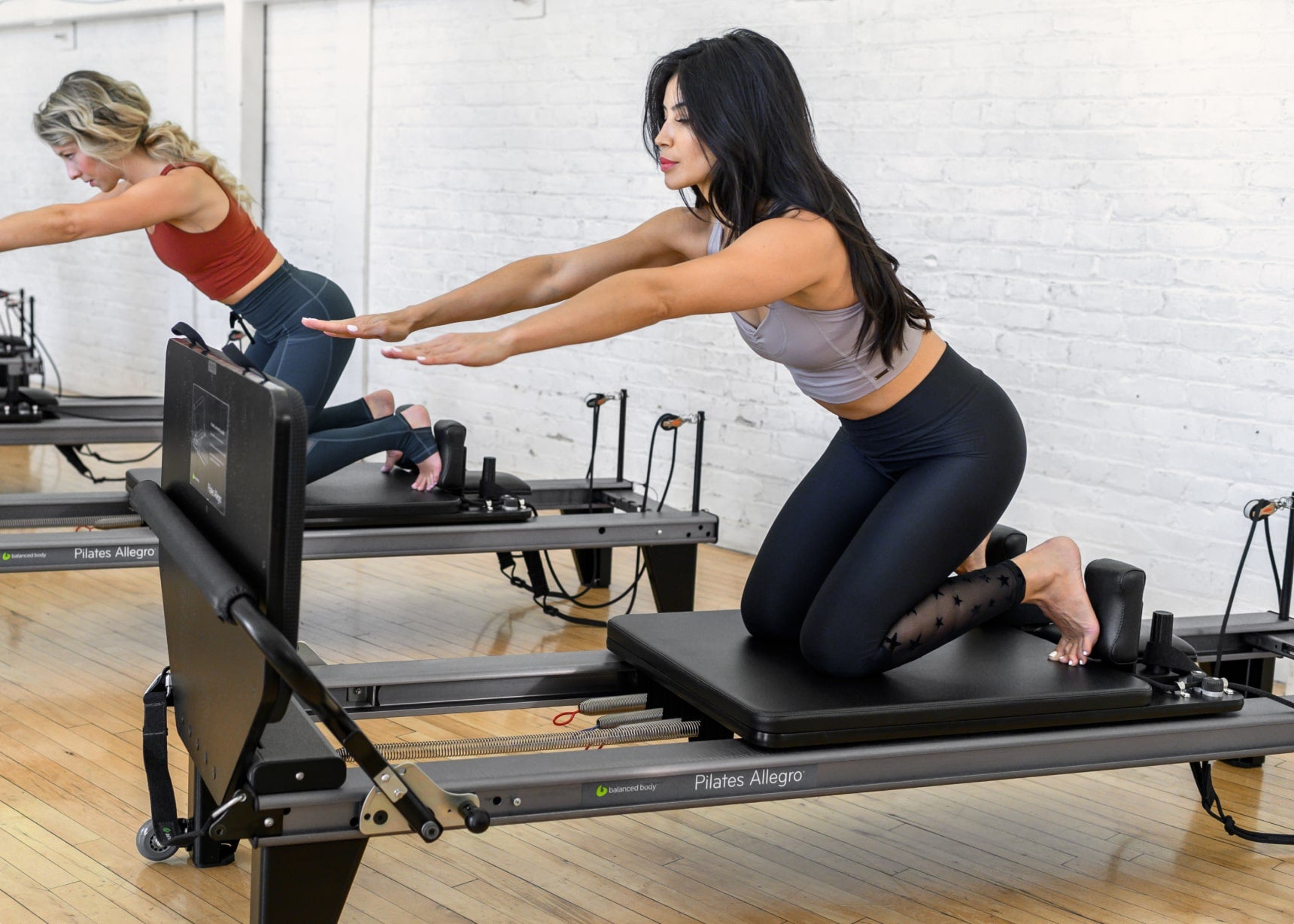Aerobic Pilates and the Jumpboard
Aerobic Pilates and the Jumpboard
By Barbara Wintroub
Have you considered incorporating cardio into your Pilates routine?
My experience is that 90% of my clients would love to add cardio during their Pilates session, so I developed a cardio workout using the Reformer jumpboard called “Aerobic Pilates”. Whether you are working with athletes, patients recovering from an injury, or you just want to spice up your Pilates programming, Aerobic Pilates will provide results.
Let me be clear: Aerobic Pilates is not the “speeding up” of Pilates exercises
It is a choreographed cardio routine on the jumpboard. The workout uses the principles of Plyometrics developed for athletes in the Soviet Union in the 1970s. Using the jumpboard, Plyometrics builds speed and power through activation of the fast twitch muscle fibers in the quadriceps. So, athletes like basketball players or volleyball players greatly benefit from this exercise.
Jumpboard in a Rehabilitation Setting
The Reformer jumpboard can be used for those with a variety of ailments, like osteoporosis, as this work-out is good for bone building. Clients with any type of knee and ankle issues will see tremendous improvement while working with the jumpboard, because the non-gravitational nature of jumping in the supine position means that less stress is placed on the joints. Not only is postural supervision easier; it is also easier for the client to maintain correct alignment in the supine position than during upright jumping.
Jumpboard for Your Regular Clients
Aerobic Pilates can challenge the core, elevate the heart rate and train coordination. Other benefits include burning more calories, working the core in a different setting, and strengthening your muscles. In our practice, we experience great results by adding the cardio section for stress reduction and endurance training, since many of our clients simply do not enjoy the treadmill or other aerobic equipment.

Incorporating 15 to 20 minutes of jumpboard is a fun activity for them and the convenience factor from an instruction standpoint is very high, since you can teach two routines for each exercise. For example, you can teach a single foot pattern for a specific exercise or you can choreograph an entire jumpboard routine.
Basic exercises on the jumpboard include double leg and single leg jumping, running in place, jumping jacks and prancing. Music can be added for extra fun. Balance and coordination are also challenged while using the jumpboard.
Jumpboard for Group Exercise Classes
In a gym or other fitness facility, Aerobic Pilates fits perfectly. Begin the Pilates class with jumpboard activities:
- Teach the foot patterns with a red and a blue spring. This will warm up the feet, knees and hips while holding the neutral pelvic zone.
- Next, teach the proper hand patterns without weights, and then add 2 lb. weights once the patterns are coordinated with the footwork
- Finally, add disco music to the foot patterns. From there the instructor can call out the patterns.
To make the workout more difficult, simulate running up a hill by changing the springs to two red springs or more. Or, use a single blue spring to simulate running on the moon, which requires a huge amount of pelvic stability that will challenge anyone. Finish the workout by leaving the jumpboard up and doing stretching exercises like elephant, mermaid, knee stretch, Eve’s stretch, etc.

Importance of Adding Cardio
Statistics show us that obesity in this country is on the rise. To contribute to a goal of reversing this trend, we, the Pilates community, must find a way to stimulate cardio activities. One group to target is the baby boomer generation. As we know, Pilates is now one of the fastest growing exercise programs in the United States, in large part because Pilates meets the fitness needs of these boomers. Many can no longer continue to jog or do high impact workouts because of the risk of injury. Aerobic Pilates using the jumpboard gives them a great, low-impact alternative for a cardio workout.
Aerobic Pilates helps to bring Pilates full circle. It not only incorporates lengthening, strengthening, stabilizing, flowing and breathing, but also huffing, puffing, dancing and laughing into your Pilates workout.
Editor’s Note: Shop the jumpboard and accessories to get started today!
About the Author
Barbara Wintroub has a degree in Kinesiology from California State University Northridge, and is owner of Retrofit School of Pilates Rx in Santa Monica, California, where she runs a comprehensive teacher training educational facility for Physical Therapists, Personal Trainers, Medical Exercise Specialists and those wishing to teach Pilates as a career. She has taught Pilates courses at UCLA and the Physical Therapy Departments at CSUN and Mt. St. Mary’s College.
As seen in the Spring 2006 Balanced Body Pilates COREterly